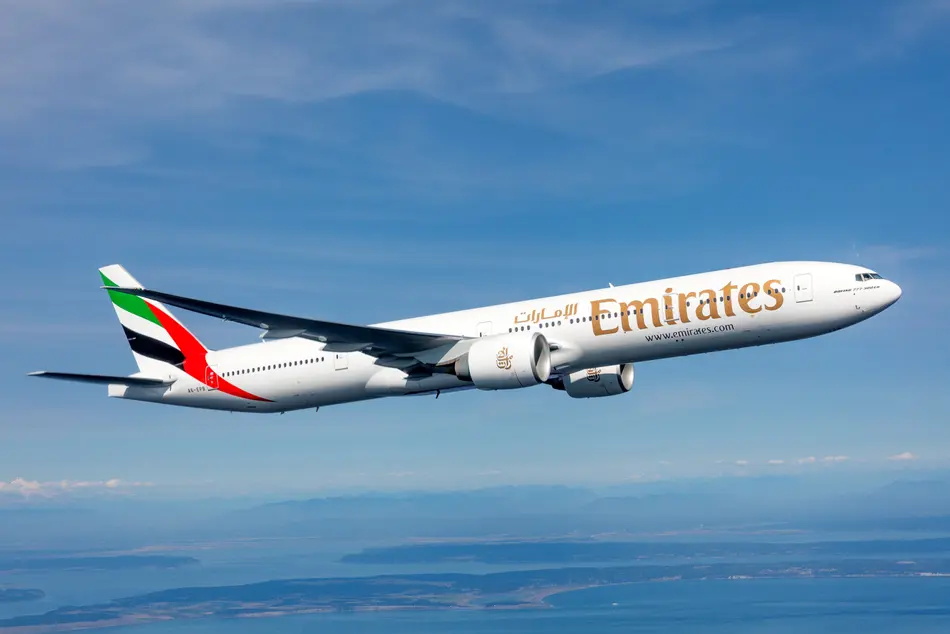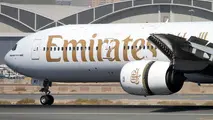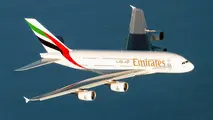Emirates Aims For 110 Operational A380s By End Of 2026
Emirates Airline President Tim Clark is planning to expand his active Airbus A380 fleet from 95-96 aircraft today to around 110 by the end of 2026 and rollout redesigned—and self-manufactured—A380 interiors across all cabins within three years.

Emirates Airline President Tim Clark is planning to expand his active Airbus A380 fleet from 95-96 aircraft today to around 110 by the end of 2026 and rollout redesigned—and self-manufactured—A380 interiors across all cabins within three years.
As of Oct. 10, Emirates’ official data lists 116 A380s in its fleet. Speaking to Aviation Week on the sidelines of the recent APG World Connect conference in Seville, Clark said 95-96 of these are currently operational, although this number varies.
“I’ve still got issues with some of the aircraft that we have to fix,” he said, declining to elaborate further. “By the end of next year, we will probably have about 110 flying.”
In the absence of an ultra-large aircraft replacement, Emirates has bought almost all of its A380s from the lessors and is planning to operate them until 2041. Getting beyond this will be difficult.
“The aircraft was spec’d for 100,000 hr., or 20 years,” Clark said. “To take an A380 up to 24-25 years is a big ask. She wasn’t designed to do that. Is it possible? I don’t know. Much will depend on the dreaded supply chain.”
Emirates will bump up against the hours ceiling first, despite clawing back flying time during the two-year pandemic grounding. Clark has no plans to reduce A380 utilization to prolong their time in the fleet.
While Emirates is “flush” with long-life airframe parts from teardowns, it is on the lookout for spare engines and specific parts. “It’s all the rotables and stuff that has to come off and be repaired, overhauled, etc. We still have a lot of those, and we are building up inventory, recognizing that this is going to be a threat to the continuance of the fleet if we don’t get those parts,” Clark said.
Emirates has a $6 billion refurbishment program underway across its wider fleet, including the A380s. Initially a full A380 cabin strip down took 42 days, but this has been cut to just 16 days. The refurbishments should be completed within 18 months.
Beyond this refresh work, all-new cabin designs will be rolled out in the next two to three years. The aircraft that are currently being refurbished will go back to having new cabins installed.
“I’m not going to go too far into this,” Clark said. “We will improve the premium cabins; we will improve the premium economy cabins. And I am working on a new seat in economy. We’ll probably end up doing a lot of it ourselves.”
Emirates is seeking supplemental type certification to manufacture its own aircraft cabin and some airframe parts to tackle supply chain issues. Clark has spoken with Airbus and Boeing; he says they are supportive of this plan.
“I want to secure the supply, the quality and everything else,” Clark said. “We can probably do it in a quarter of the time, and for a lot less money. In Europe, it’s €250 [$289] an hour for technical supply and labor. In Dubai, my in-house labor rate is €50. You can see, just on that alone, this is a step change.”
He said Dubai’s port has the second-largest aluminum smelter in the world. “I can easily take aluminum which hasn’t fully set from there and put it into the molds for seats. The distance is 10 km [6.2 mi.].”
Emirates is also considering increasing its A380 engine overhaul capabilities, moving beyond its existing engine tests and modules changes into full strip down and rebuild work. “That’s something we would look at very soon,” Clark said.
In the meantime, premium demand is going strong and there is no ultra-large aircraft successor to replace the A380 at congested hubs. “Some of the highest loads we’ve ever seen in our premium cabins has been in the last year, the last 18 months,” Clark said. Over the summer, Emirates could have sold each seat three times over, he said.
“You’ll never make it work if you’ve only got 10 or 15 aircraft [A380s]. This is a scale beast,” he said. “We were able to go from an original order of 15 to 125 in the belief that, as our unit costs fell, the aircraft would become more and more profitable for us. That’s exactly what has happened. Nobody took the punt, with regard to scaling their operation.”


